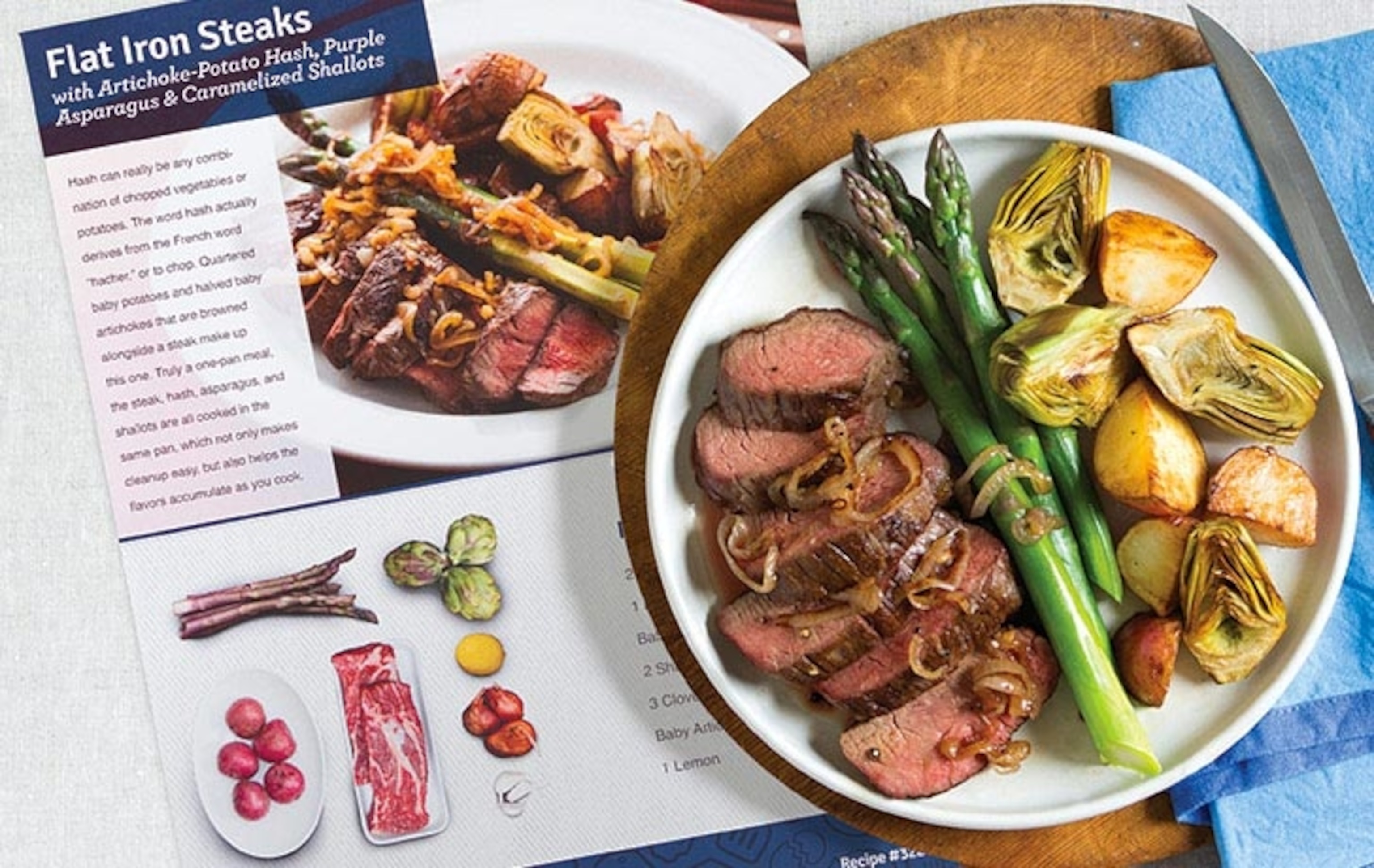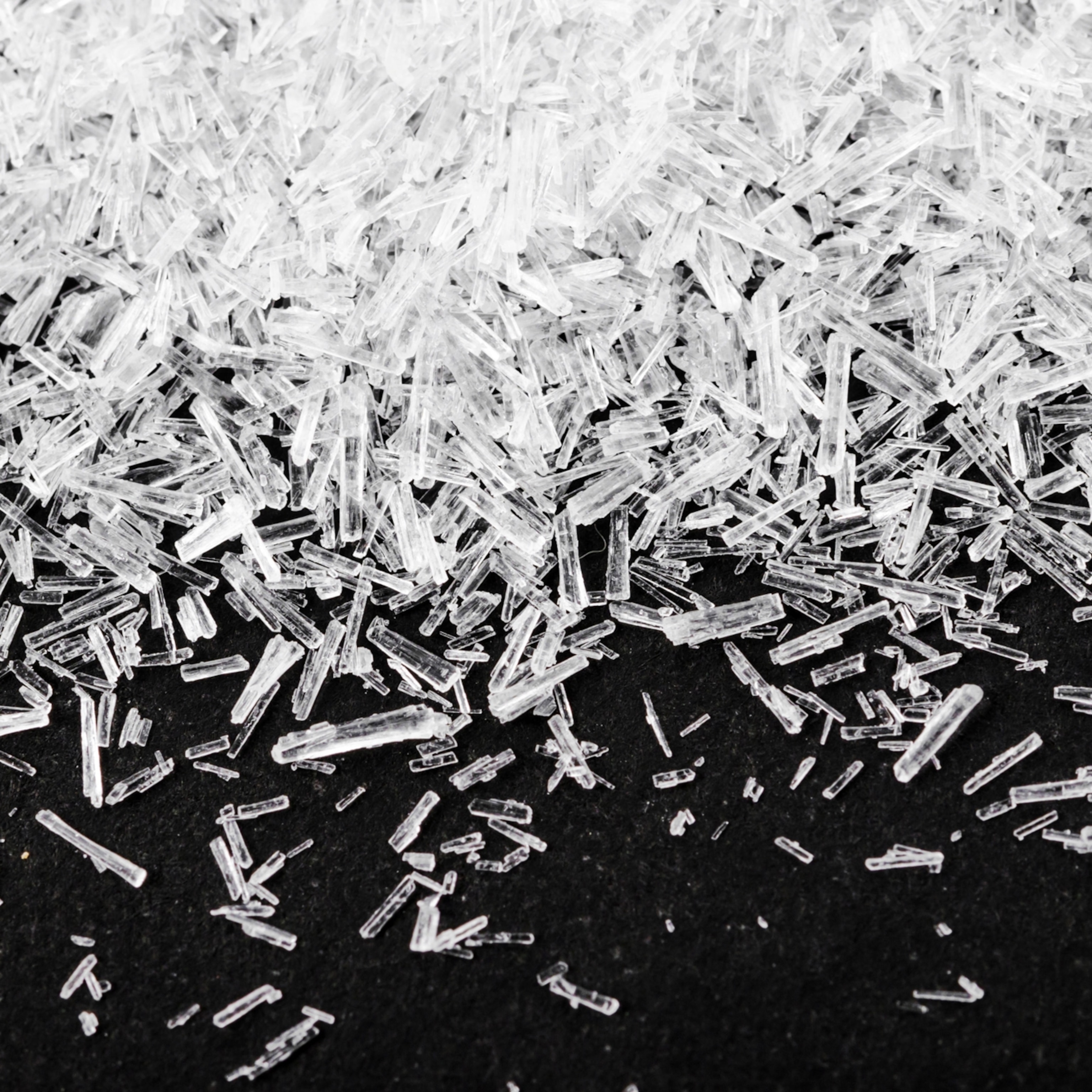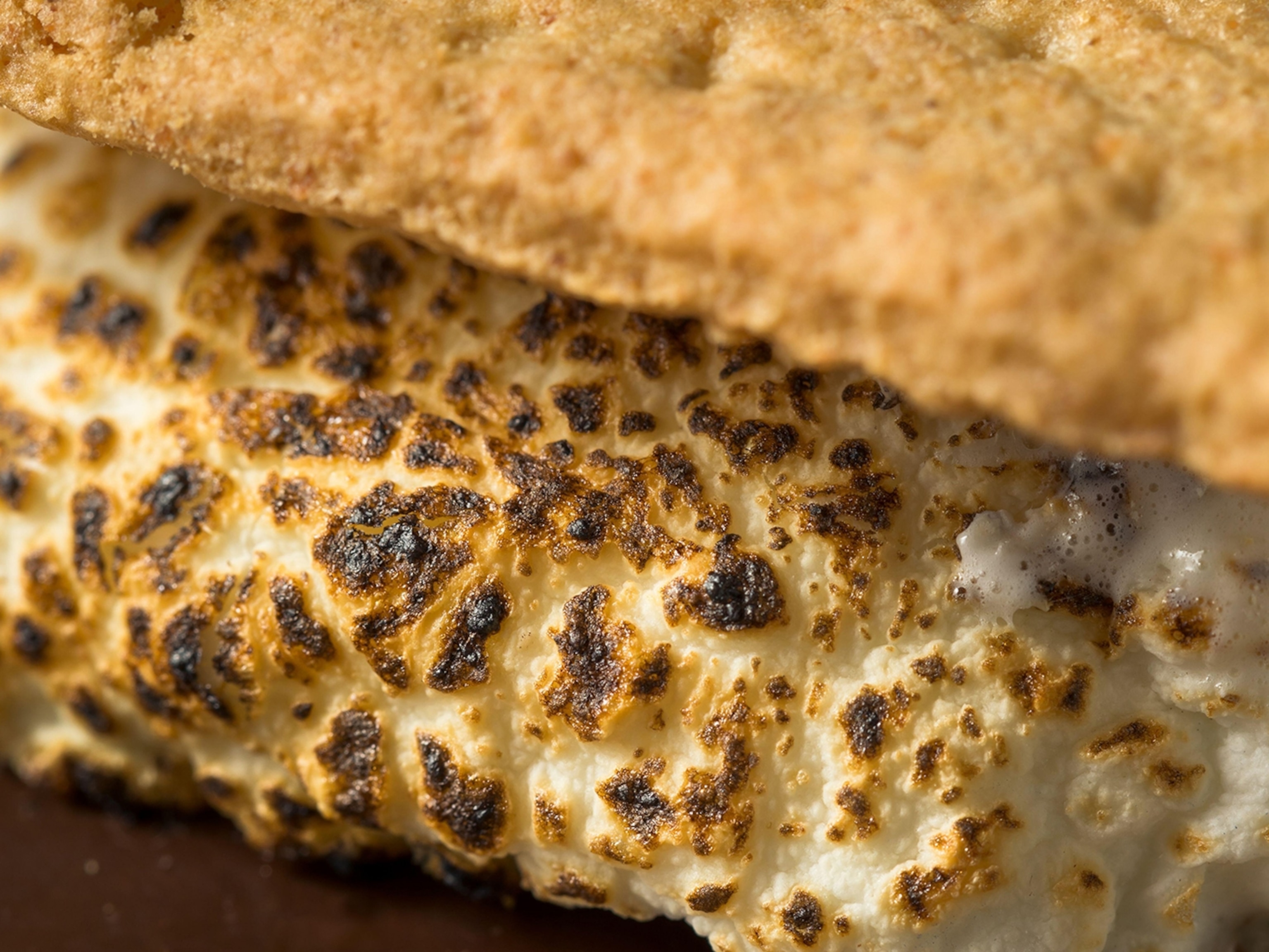
Can Blue Apron Teach You to Cook?
The number of meals cooked in American homes is declining. But the business of selling Americans everything it takes to make a home-cooked meal is booming.
Blue Apron, a company that creates and delivers kits of recipes and ingredients, now sends out three million build-it-yourself meals a month. This is up from last year, when the company was shipping just half a million meal prep kits a month. Combine that with competitors like Plated and Hello Fresh, and the trend is clear; a significant number of people are cooking from kits that take the grocery shopping and guesswork out of cooking.
Each of the companies offers a similar promise of good-tasting meals that aren’t too fatty (they have calorie limits) and take only about 30 minutes to prepare. This commitment is—according to conversations with customers and a search of reviews and social media posts—fulfilled. Making a satisfying meal is a matter of chopping, reading, and eating. It requires only a kitchen and a kit.
These services have been compared to another kit-based craze—paint-by-numbers. In the mid-1950s, critics groused that paint-by-numbers paintings outnumbered original art on American walls. They called the owners and appreciators of the self-made works childish and “morons.” Art, they said, is more than filling in lines. It doesn’t come from a kit.
But is cooking from a kit the culinary equivalent of painting by numbers? Is it coloring or cooking?
The Box
Meal kit prep is certainly simple. For the cost of a subscription (around 10 dollars a meal), Blue Apron subscribers get a weekly delivery of everything but the most basic ingredients (there’s no olive oil or salt, for instance).

One of Blue Apron’s slogans is “A better way to cook.” It’s also a better way to get groceries—raw meat, baggies of herbs, and fresh vegetables all come portioned, packed in ice, and topped with recipe cards. Apart from particularly spicy seasonings, all of each ingredient goes into a reasonably-portioned meal. There’s no pressure to finish potential leftovers that are too meager for the next day’s lunch and no stray leaves of chard rotting in the crisper drawer. The company advertises this simplicity (you know this if you’ve heard one of their many podcast sponsorships).
Similarly simple, the recipe cards give a brief rundown of each dish and its origins. On the opposite side, six illustrated steps show how to unpack the box and use simple kitchen tools to turn the contents into a meal that’s often more exotic than the average home cook prepares. In my sample box, I received the fixings for shrimp sandwiches with celery salad, cumin-Sichuan beef noodles, and “southern-style” chicken cacciatore (it was served on grits).
Is It Actually Cooking?
For the inexperienced or even the fairly experienced home cook, combining southern staples with Mediterranean technique to make a dish that incorporates homemade sauce, pan-fried chicken, and buttery grits is an accomplishment. But as I made it, I didn’t know why I was setting the pan on medium-high heat or why I was using a whisk on the grits.
I’d made something similar in the past (sans grits), following instructions from an online cooking course from the Culinary Institute of America (CIA). But that preparation was preceded by a lecture on technique and science. Nothing in the Blue Apron literature explained the steps I was taking. I ended up with a great meal, but my role in it felt more like assembler than cook.
I asked the CIA about the difference. “For simple home cooking, understanding techniques is so much more important than having a recipe,” says Brandon Walsh, the Dean of Culinary Education for the Beginning Program at the CIA. Walsh has no specific complaint about Blue Apron. He says learning from recipes is a good way to get started and build an interest in preparing your own food. But it will take a more thorough education to become a good cook, he says.
“Let’s say you get a piece of meat in there, and you don’t understand all the concepts behind searing that helps you make a quick pan sauce because you’ve never seared your meat properly in a pan. If you don’t learn that, you won’t bring your food to a level that’s awesome,” he says.
Blue Apron has started posting videos to its recipes site explaining the basics of various cooking techniques described on the recipe cards. That could help a home cook realize why an onion should be cut a certain way, but you still don’t have to watch the video to cook a Blue Apron meal.
Does Blue Apron Want You to Cook?
In The New Republic, Corby Kummer argues that meal kits can’t truly replace home cooking. First, Kummer’s joys of cooking are related to buying groceries—meeting food sellers and stumbling upon new ingredients. Second, he assumes there’s no business interest in making people better cooks.
“The trouble with meal kits is if they achieve their goal of making people try and then embrace the exotic and new, and give them long-hoped-for confidence in cooking; They’ll liberate the newly hatched cook from ever buying another meal kit,” Kummer concludes.
As a company, Blue Apron is dressed in the concept of teaching cooking. Its name is inspired by the uniforms chefs-in-training wear in some programs. I asked the company’s co-founder and COO Matt Wadiak whether he actually wants people cooking without his business.
“My business answer is I want people to cook with Blue Apron all the time, but my practical answer is I want people to cook at home,” he said.
Wadiak has worked in food since the 1990s, attending the CIA and working in a restaurant before becoming an entrepreneur. He cares deeply about it (he was holding a honeynut squash while we talked on the phone). But he’s no fan of the waste that happens in the grocery store system, and he says Blue Apron is meant in part to find better ways to source food. Part of that, he says, is getting people to use their kitchens for something. “Sustainability starts with people cooking in their home on a regular basis,” he says. “It is real cooking at the end of the day,” Wadiak says of the service. “We make you do the work in the kitchen and learn about new ingredients.”
It’s the second half of that claim that could be even more beneficial than recipes and kits. Blue Apron meals may be showier than the typical homemade fare, but that’s where the education comes in.
“Let’s use ginger as an example,” says Walsh with the CIA. “A lot of people go to a Chinese or Thai restaurant and identify this wonderful flavor they’re having. They never understand what it is. Then they get a container and they’re making pad thai and they get ginger. Then you’re smelling that smell and you’re relating it to dishes you never had before. You know how much ginger you want to put in a dish. You’ve identified a flavor you’ve never known before.”
The customers I talked to said this discovery has made them feel like better cooks.
“I’ve used ingredients I would’ve never touched because I’ve never eaten them, seen them in the store or know what to do with them,” says Chris Auchterlonie, a Los Angeles-based Blue Apron customer who considered himself a pretty good cook before trying the service. Auchterlonie has expanded this to away-from-the-box cooking.
“I’ve started to incorporate some of the ingredients or modifying the recipes to fit whatever I have on-hand into non-Blue Apron days now that I’m more confident,” he says.
It’s Not Quite Cooking, and It’s Not Quite Not Cooking, Either
Whether Blue Apron is actual cooking depends on your level of talent in the kitchen and your experience with ingredients. It also depends on your definition of cooking. Is it preparation, or is it sourcing and planning, too? Is improvisation a factor? Is education? Too close a definition rules out not only Blue Apron, but following recipes in general. Too loose, and microwaving pizza rolls counts.
One thing cooking is, is rare. At least for many Americans. According to a recent Forbes articlea recent Forbes articlea recent Forbes article, “Americans spend $1 trillion each year on food, about $400 billion of that on dinner, but they’re not spending as much time as they used to cooking the food themselves. Less than 60 percent of dinners eaten at home are cooked there, according to a recent study by market research firm NPD Group, down from 71 percent in 1985.”
The Blue Apron customers I interviewed both use the service as an alternative to sit-down and takeout restaurants. They say the prospects of good flavor, limited calories, easy preparation, and no grocery shopping combine to make Blue Apron a better option than eating out of the house or calling for delivery.
The fact that people are using stoves instead of phones to feed themselves is a step toward Wadiak’s stated goal, even if it isn’t the same as going to a farmer’s market, and even if it’s still possible to live off of Blue Apron and never learn how to sauté properly.
People who painted by numbers may never have opened gallery shows, but they had to combine colors and use brushes. The critics who complained that there were too many self-made mediocre paintings on American walls in the 1950s overlooked one thing—people had something on their walls.
Gabe Bullard is a senior producer at National Geographic. He’s also on Twitter.








